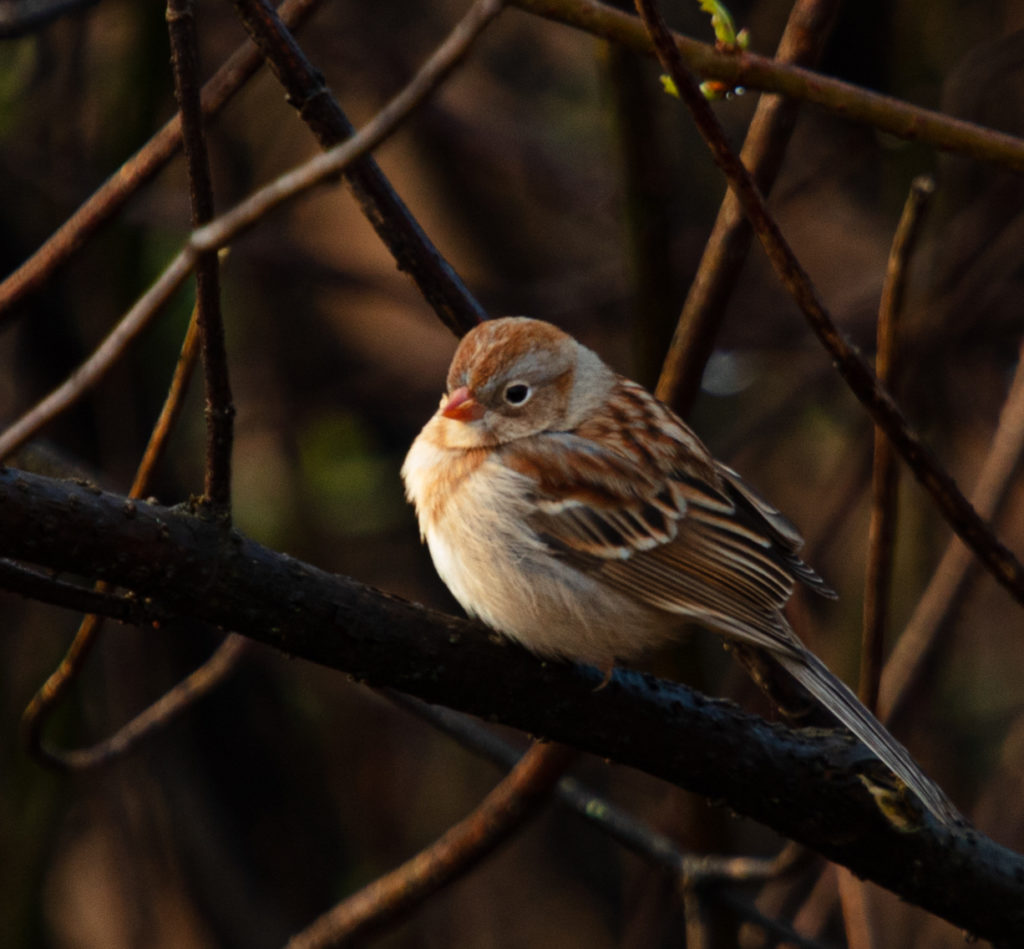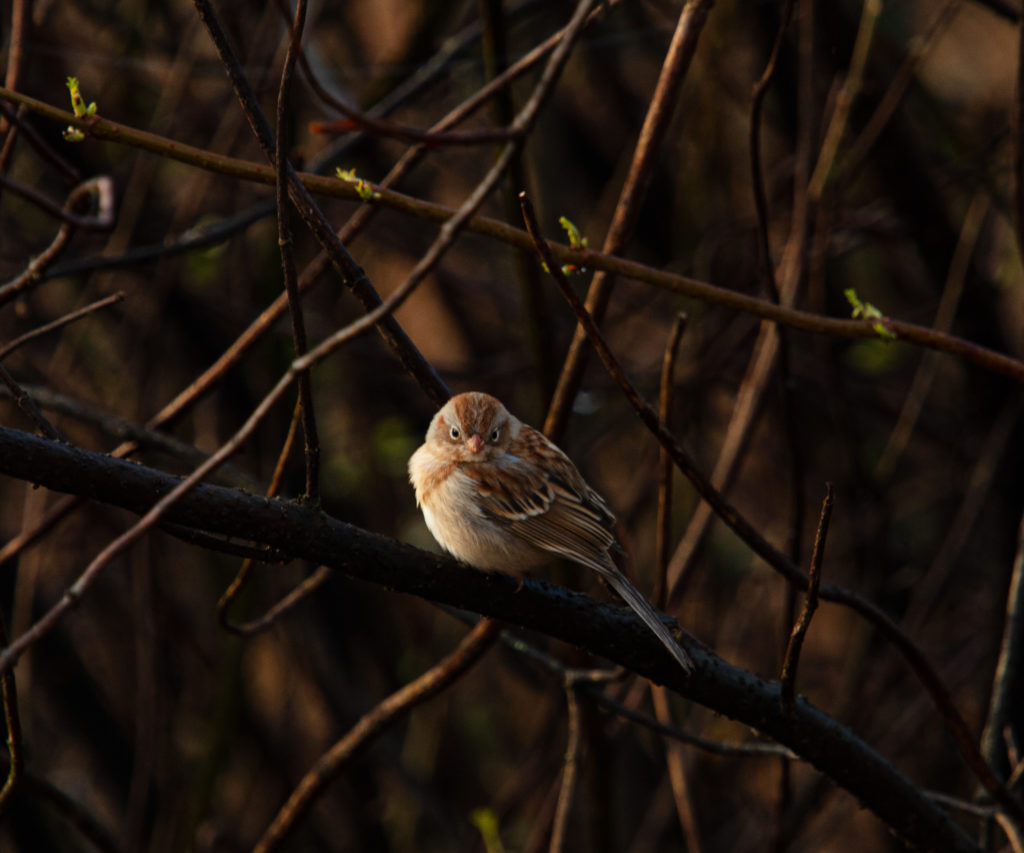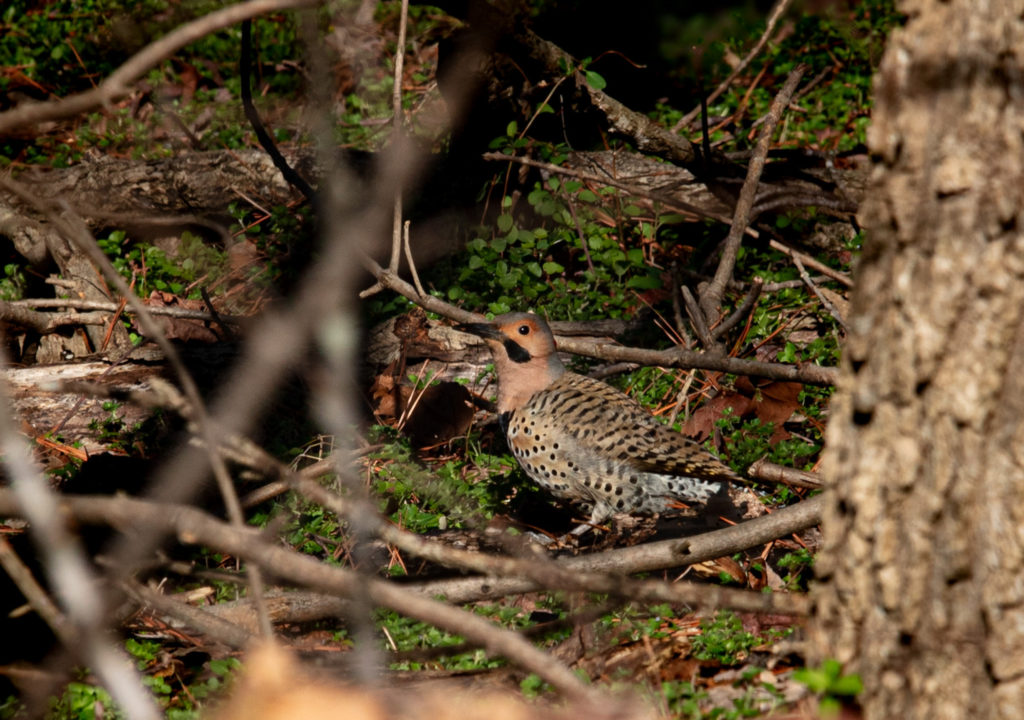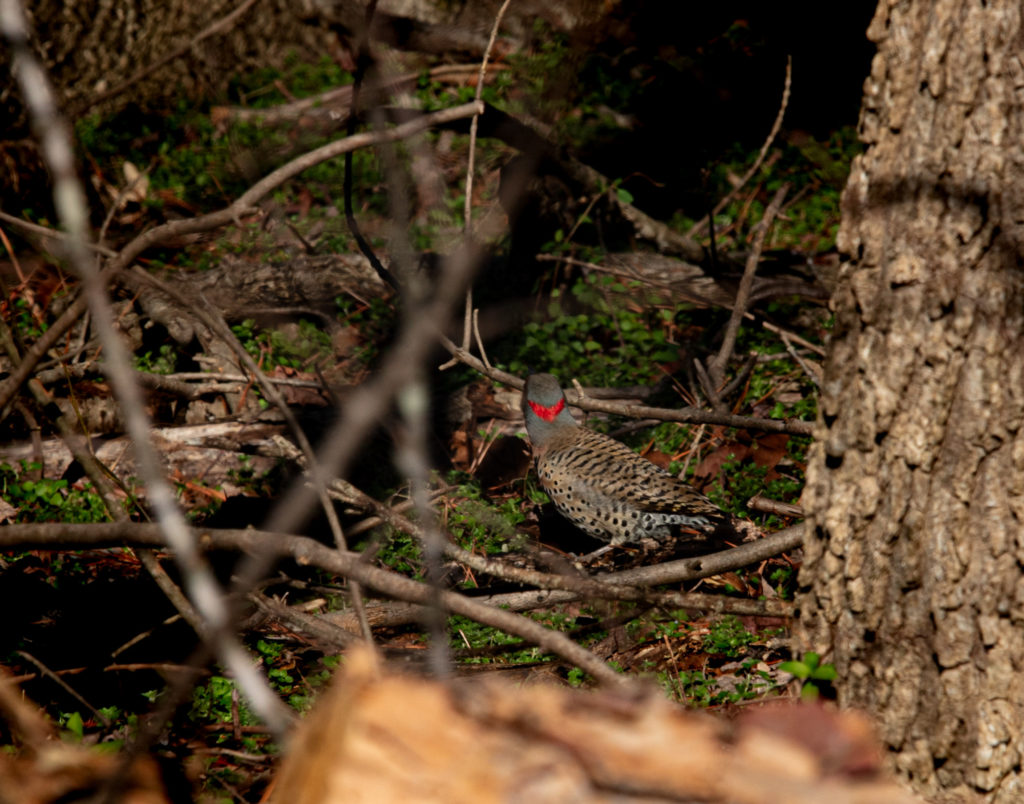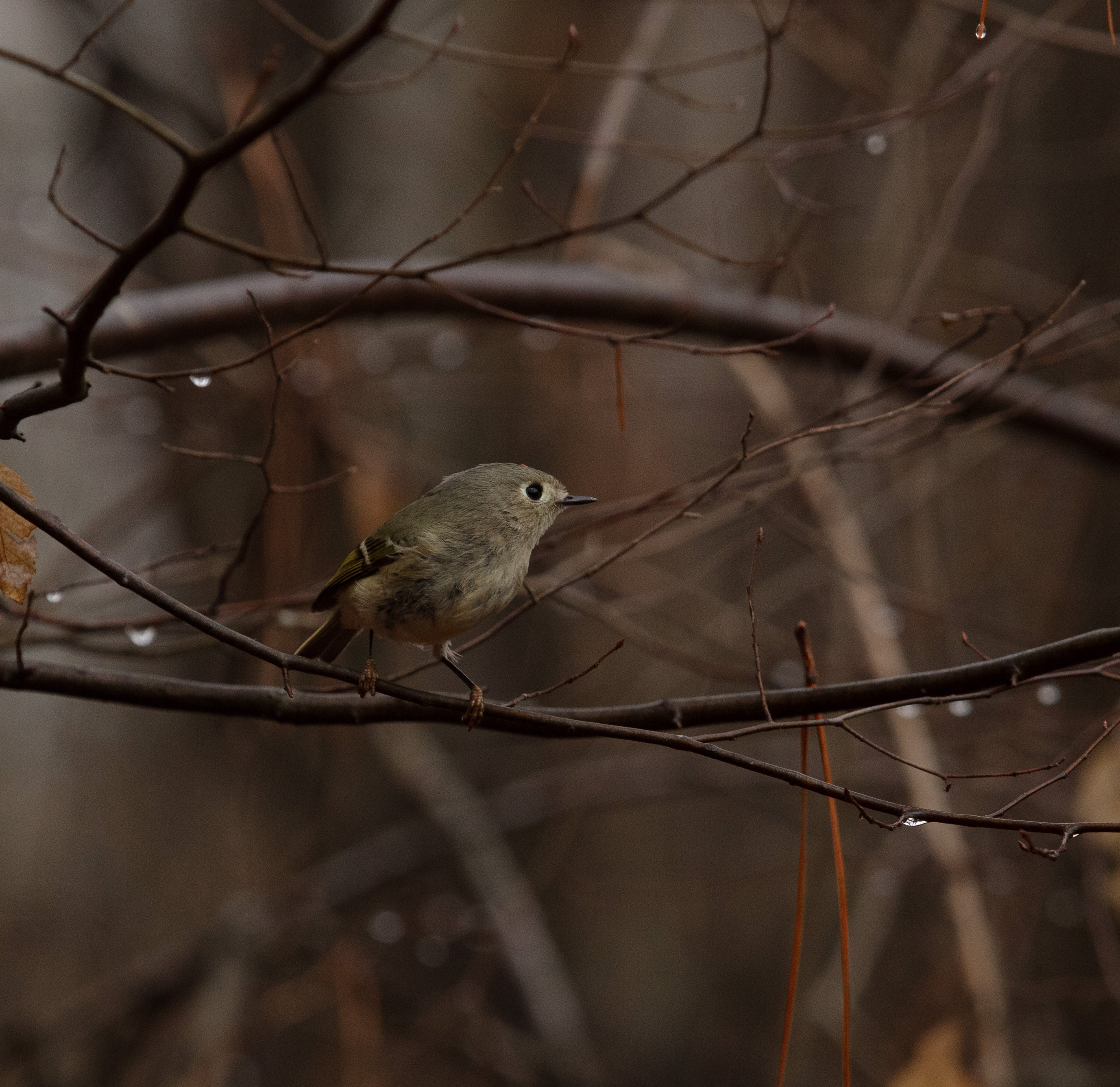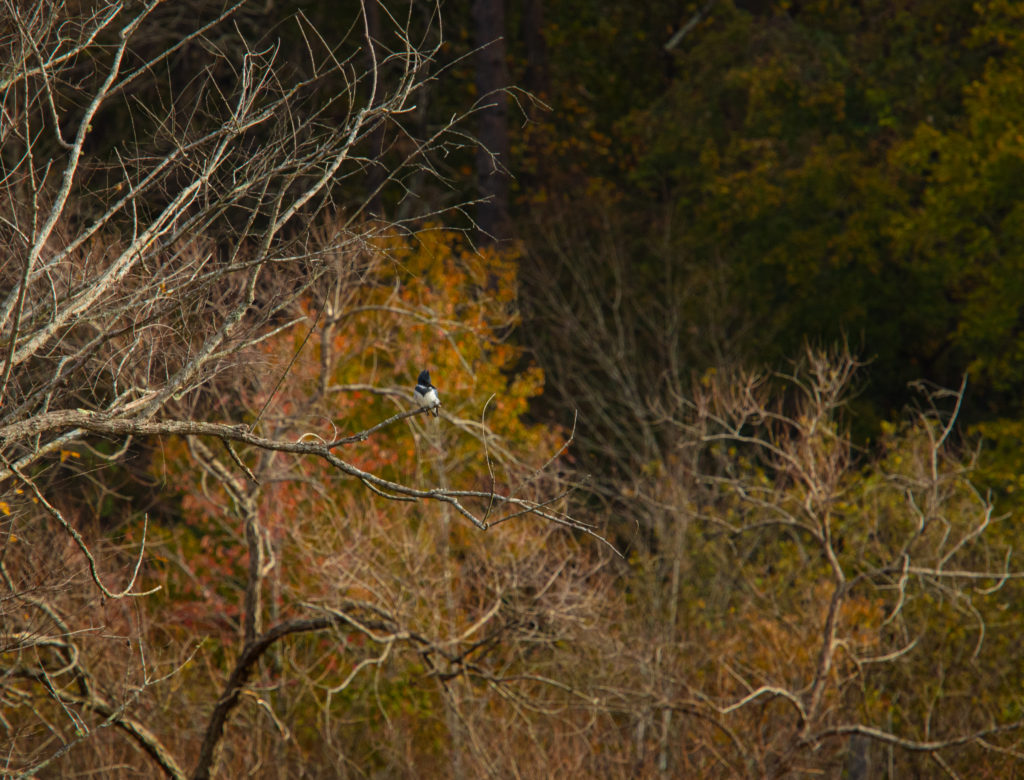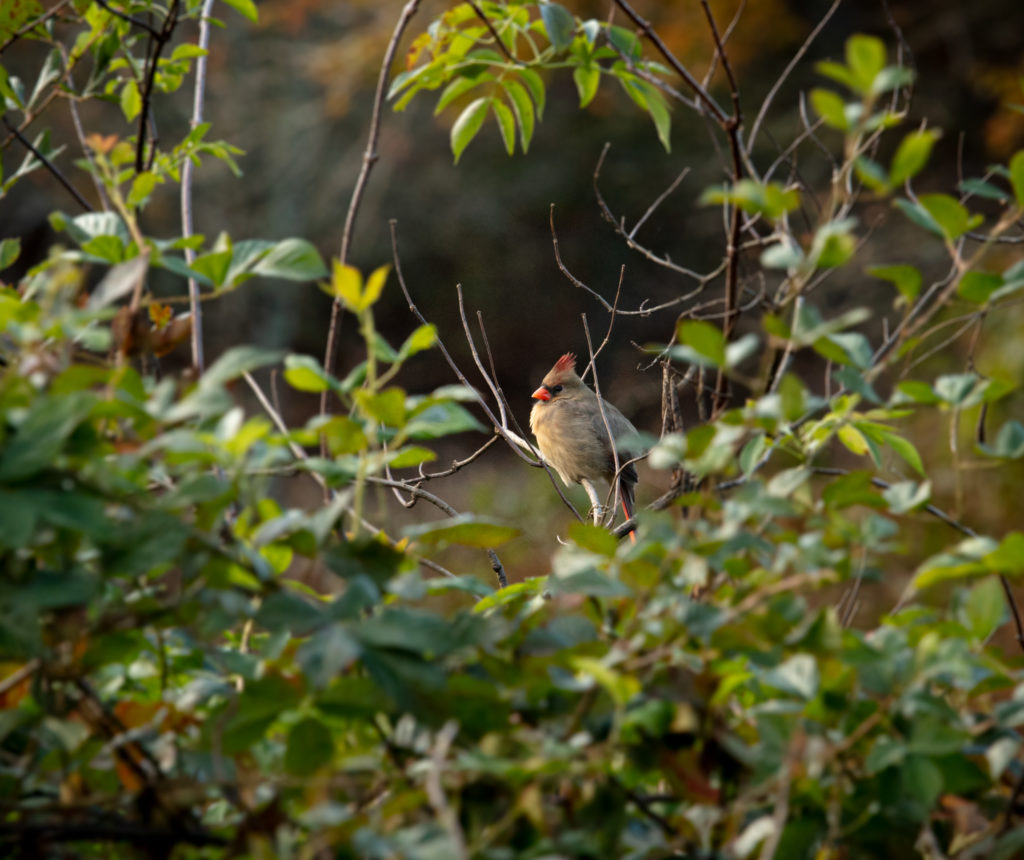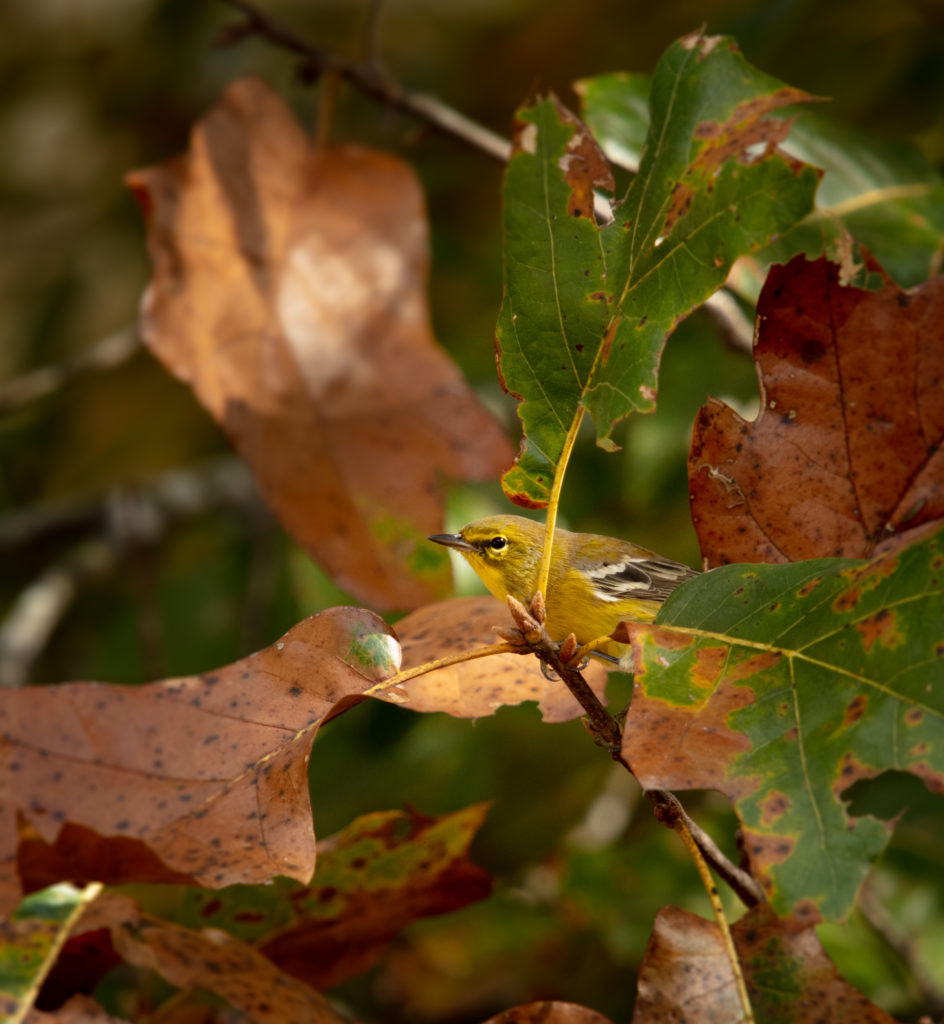While tracking down a Fox Sparrow in the woods at Yates Mill Park a few weeks ago, I encountered a noisy Carolina Wren squeaking in a briar along the trail. This little bird and it’s mate were bouncing from limb to limb calling loudly to one another as they searched for food.
It took me a few minutes to be able to snap a decent photo since they moved so quickly in the dense tangle of thorns.

This is typical behavior as Carolina Wrens are more often heard than seen because of their preference for dense, brushy areas. They are frequently found in moist deciduous forests (such as what’s found at Yates Mill Park) as well as in suburban areas including parks and gardens, as well as in agricultural areas and forest edges.

The Carolina Wren is an active, energetic, inquisitive species which can act kind of aggressive at times towards perceived intruders, particularly near favorite feeding spots or nesting sites.
Often found in pairs, these birds hold their tails cocked over their backs and are just as likely to dig through leaf litter as they are to climb tree trunks while feeding.
Swipe through to see a few pics of these cool little birds as well as the one shot I ended up getting of that Fox Sparrow!
Photos by @sally_siko of @birdwatching_nc
Canon 5Ds


